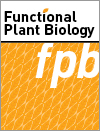FP22073A genome-wide association study (GWAS) identifies multiple loci linked with the natural variation for Al3+ resistance in Brassica napus

Brassica napus production on acid soils is limited by Al3+ toxicity. Since little information is available on the natural genotypic variation in Al3+ resistance in this crop we screened 352 diverse accessions for Al3+ resistance in hydroponics. We performed a GWAS analysis and detected significant variation in Al3+ resistance among the accessions. Genetic markers and germplasm were identified that could be used by breeders to increase the acid-soil tolerance of B. napus.
FP22073 Abstract | FP22073 Full Text | FP22073PDF (3 MB) | FP22073Supplementary Material (1.2 MB) Open Access Article




